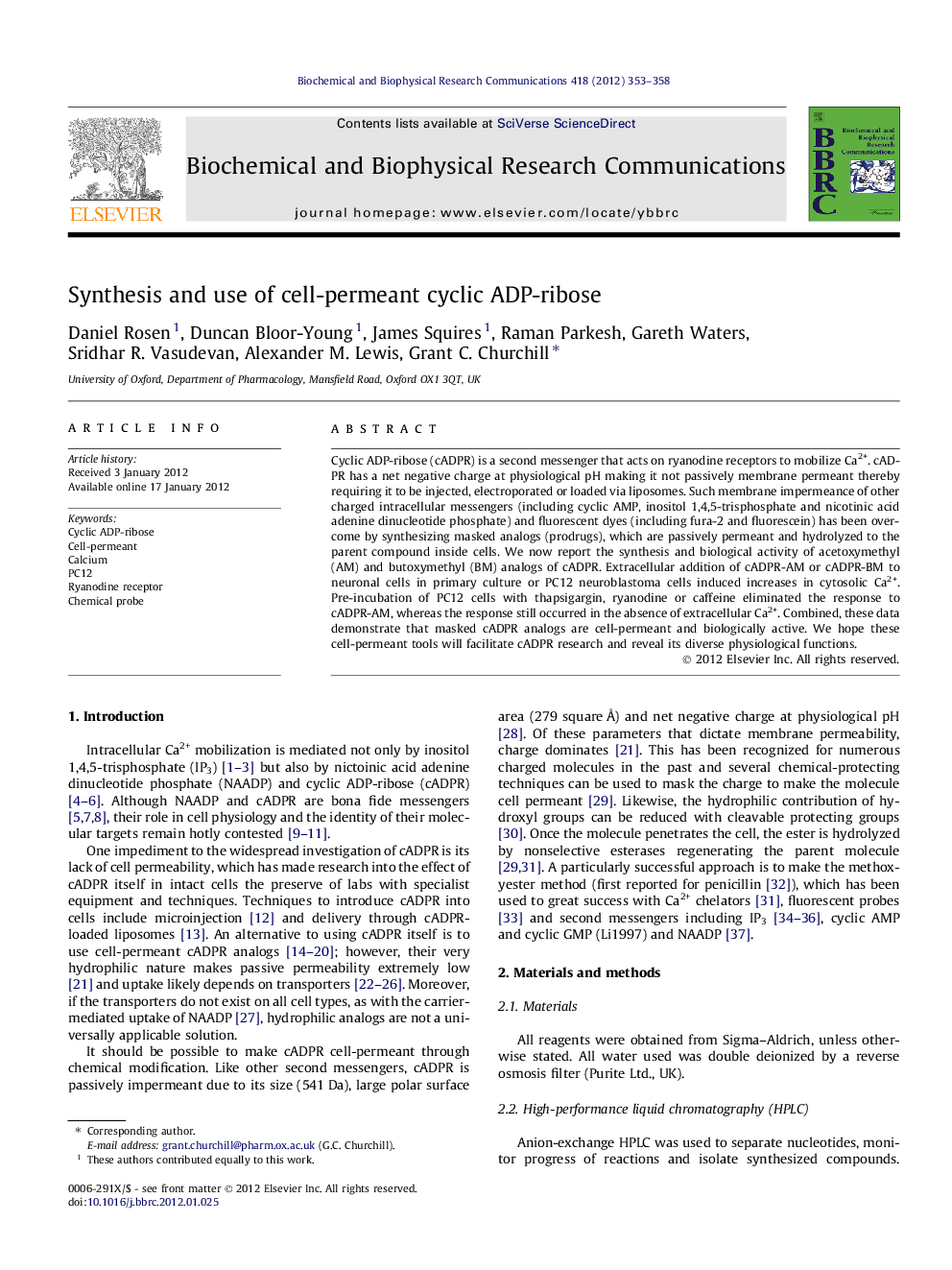| Article ID | Journal | Published Year | Pages | File Type |
|---|---|---|---|---|
| 1930049 | Biochemical and Biophysical Research Communications | 2012 | 6 Pages |
Cyclic ADP-ribose (cADPR) is a second messenger that acts on ryanodine receptors to mobilize Ca2+. cADPR has a net negative charge at physiological pH making it not passively membrane permeant thereby requiring it to be injected, electroporated or loaded via liposomes. Such membrane impermeance of other charged intracellular messengers (including cyclic AMP, inositol 1,4,5-trisphosphate and nicotinic acid adenine dinucleotide phosphate) and fluorescent dyes (including fura-2 and fluorescein) has been overcome by synthesizing masked analogs (prodrugs), which are passively permeant and hydrolyzed to the parent compound inside cells. We now report the synthesis and biological activity of acetoxymethyl (AM) and butoxymethyl (BM) analogs of cADPR. Extracellular addition of cADPR-AM or cADPR-BM to neuronal cells in primary culture or PC12 neuroblastoma cells induced increases in cytosolic Ca2+. Pre-incubation of PC12 cells with thapsigargin, ryanodine or caffeine eliminated the response to cADPR-AM, whereas the response still occurred in the absence of extracellular Ca2+. Combined, these data demonstrate that masked cADPR analogs are cell-permeant and biologically active. We hope these cell-permeant tools will facilitate cADPR research and reveal its diverse physiological functions.
► We synthesized analogs of cADPR with acetoxymethyl and butoxymethyl groups. ► These analogs of cADPR are cell-permeant and biologically active in neurons. ► Pharmacology of the cADPR analogs indicates action at the endoplasmic reticulum.
